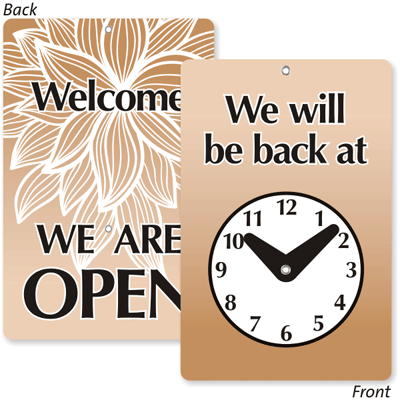How to Source and Use Compliant Signage in Business
Lots of different elements have to come together for you to be able to run a successful company. But, often, it is the relatively little things that get missed and catch business owners out.
One example of this is failing to buy compliant signage from somewhere like mydoorsign and displaying it correctly. In some cases, businesses have been fined as much as $75,000 for not using the correct signage in their workplace, retail outlets, and on their equipment. There are several sets of rules surrounding the use of signs in commercial settings. Below is an overview of the most relevant of them.
ADA compliance
The one that seems to most often catch business owners out is to ensure that their signs are compliant with The Americans with Disabilities Act (ADA). In fairness, the requirements are quite complex.
But, there is also a lack of understanding of just how much this specialist signage can help people with disabilities. This, combined with the fact that, in many cases, old signs need to be taken down and replaced with new ones, which is expensive, has led to high levels of non-compliance.
However, things are starting to change as local authorities and disability groups apply a little more pressure and better educate business owners. You can read about these moves and how to ensure that your firm´s signs are ADA compliant by clicking here. Considering all of the lawsuits being filed against businesses whose websites are not ADA compliant is something to take note of
OSHA compliant
Occupational Safety and Health (OSH) legislation has been in force since 1970. These laws have transformed the American workplace. They have been really effective at keeping workers, visitors, and customers are safer. Appropriate signage plays a significant role in doing this. In particular, hazard warning signs. So, following these rules is vitally important.
Complying with local rules and regulations
The above are both an example of rules that are applied on a national basis. But, in many places, business owners also need to follow state and council rules. In some cases, they will also have to comply with rules set by their landlord or the industrial area or shopping mall they are based in. For example, street signs may be allowed, but you will probably need to have a license.
There will also likely be some rule about how big it has to be and what times it can be displayed. You will likely have to take pavement signs inside when it starts to get dark for safety reasons.
Buy from the right sources
As you can see, complying with signage rules and regulations is quite complex. Fortunately, the best business sign providers realize this. So, they go the extra mile and provide their clients with the information they need and a way to ask any questions they have.
Speaking to them, your council and inspection authorities will enable you to work out what is needed to keep your business fully compliant. Your professional association will usually also be able to help you with this matter.




















